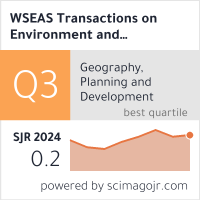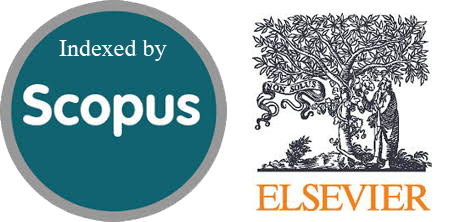Monodora Myristica Extract: A Sustainable Substitute to Zinc Phosphate for Epoxy Coatings.
Abstract
This research explored the use of monodora myristica (African nutmeg) extract as a sustainable and biodegradable substitute for zinc phosphate in epoxy coatings. A market standard coating formulation was used, and the percentage of zinc phosphate in the coating was substituted with Monodora myristica extract (MME). The coatings were applied to the mild steel substrate and allowed to dry in the open air. Fourier Transform Infrared Spectroscopy (FTIR) confirmed the presence of functional groups and bioactive ingredients that assist in both coatings' anti-corrosion properties. Morphological properties were studied using Atomic Force Microscopy (AFM), Scanning Electron Microscopy (SEM). Thermal studies were carried out using a Differential Scanning Calorimeter (DSC), while the electrochemical test utilised the rapid electrochemical assessment of paints (REAP) test. Finally, Computational studies were performed using density functional theory (DFT) and molecular Dynamics simulations (MDS). The results of the AFM showed a surface roughness of 1.15nm and 0.97nm for epoxy coated with zinc phosphate and extract, respectively. The extract-based coating had a slightly higher hardness value (100.3 HRB) compared to the market standard, with a micro hardness of 99.2 HRB. The DSC results showed that both coatings exhibit minor low-temperature features (~50–80 °C). The zinc phosphate formulation maintains a gradual heat-flow profile, while Monodora extract coating shows an earlier and steadier increase in heat flow. The (REAP tests showed a very close coating solution resistance of 7.43 ohms and 8.99 ohms, and a very close Relative Time To Failure, TTF (hrs) of 1240.4. and 1090.23 hrs. for both the epoxy/zinc phosphate and epoxy/extract coatings, respectively. The study demonstrates that coatings formulated with MME exhibit comparable morphological, thermal, and electrochemical properties to zinc phosphate-based coatings, indicating that MME can effectively replace hazardous substances without compromising performance.
References
Aiman, Nur, Najwa Kamarul, Sheikh Ahmad, Izaddin Sheikh, Fazira Ilyana, Abdul Razak, Siti Syaida Sirat, Amalina Mohd, Siti Radiah, Mohd Kamarudin, and Nur Nadia Dzulkifli. 2025. “Hirshfeld , Surface Analysis , DFT and Corrosion Inhibition Mechanism of Vanillin 4-Ethylthiosemicarbazone on Mild Steel in 1M HCl.” Moroccan Journal of Chemistry 13(1):80–105.
Al-Amiery, Ahmed A., Wan Nor Roslam Wan Isahak, and Waleed Khalid Al-Azzawi. 2023. “Corrosion Inhibitors: Natural and Synthetic Organic Inhibitors.” Lubricants 11(4):174. doi: 10.3390/lubricants11040174.
Bansal, Poonam, Sunayna Choudhary, Tanvi Taneja, Sonali Sangwan, Bhupesh Gupta, Soniya Goyal, Raman Kumar, and Pooja Sharma. 2016. “We Are IntechOpen , the World ’ s Leading Publisher of Open Access Books Built by Scientists , for Scientists TOP 1 %.” Intech i(tourism):15. doi: http://dx.doi.org/10.5772/intechopen.72943.
Barsana, S. Ayesha, A. Sultan Nasar, and M. J. Umapathy. 2025. “Enhanced Corrosion Resistance of Zinc Phosphate Coatings on Mild Steel through Incorporation of Nanocrystalline CeO 2 and CeO 2 –CuO Nanocomposite.” RSC Advances 15(26):20916–34. doi: 10.1039/D5RA02800K.
Bastidas, David M. 2020. “Corrosion and Protection of Metals.” Metals 10(4):458. doi: 10.3390/met10040458.
Buchheit, R. G., M. Cunningham, H. Jensen, M. W. Kendig, and M. A. Martinez. 1998. “A Correlation Between Salt Spray and Electrochemical Impedance Spectroscopy Test Results for Conversion-Coated Aluminum Alloys.” Corrosion 54(1):61–72. doi: 10.5006/1.3284829.
Egbuhuzor, O. M., I. C. Madufor, S. C. Nwanonenyi, and J. O. Bokolo. 2020. “Adsorption Behavior and Corrosion Rate Model of Sodium Carboxymethyl Cellulose (Na-CMC) Polymer on Aluminium in HCl Solution.” Nigerian Journal of Technology 39(2):369–78. doi: 10.4314/njt.v39i2.7.
Esonu, B. O., U. D. Ogbonna, G. A. Anyanwu, U. H. Ukpabi, F. C. Azubuike, and V. Odoemelam. 2020. “Chemical and Nutritive Evaluation of Jatropha Curcas Leaf Meal in Broiler Chicken Diets.” Nigerian Journal of Animal Production 47(4):176–83.
Hansson, C. M. 2011. “The Impact of Corrosion on Society.” Metallurgical and Materials Transactions A: Physical Metallurgy and Materials Science 42(10):2952–62. doi: 10.1007/s11661-011-0703-2.
Hao, Yongsheng, Fuchun Liu, En-Hou Han, Saima Anjum, and Guobao Xu. 2013. “The Mechanism of Inhibition by Zinc Phosphate in an Epoxy Coating.” Corrosion Science 69:77–86. doi: 10.1016/j.corsci.2012.11.025.
Humar, M. 2017. “Protection of the Bio-Based Material.” Pp. 187–247 in Performance of Bio-based Building Materials. Elsevier.
Leite, Adriana O. S., Walney S. Araújo, Isabel C. P. Margarit, Adriana N. Correia, and Pedro de Lima-Neto. 2005. “Evaluation of the Anticorrosive Properties of Environmental Friendly Inorganic Corrosion Inhibitors Pigments.” Journal of the Brazilian Chemical Society 16(4):756–62. doi: 10.1590/S0103-50532005000500013.
Nguyen, Khang Duy Huu, Tran Dinh Manh, Bui Xuan Vuong, Lien Thi Phuong Nguyen, Dao Thanh Vu, Thanh Liem Huynh, and Kim Long Duong Ngo. 2024. “Syzygium Polyanthum (Wight) Walp. Leaf Extract as a Sustainable Corrosion Inhibitor for Carbon Steel in Hydrochloric Acidic Environment.” Journal of Industrial and Engineering Chemistry. doi: 10.1016/j.jiec.2024.08.054.
Obonga, Wilfred O., Edwin O. Omeje, Charles O. Nnadi, and Wilson G. Ocheme. 2019. “Phytochemical Evaluation of Extracts and GC-MS Analysis of Oil from Monodora Myristica Seed.” Dhaka University Journal of Pharmaceutical Sciences 18(1):69–73. doi: 10.3329/dujps.v18i1.41893.
Ong, Gerard, Ramesh Kasi, and Ramesh Subramaniam. 2021. “A Review on Plant Extracts as Natural Additives in Coating Applications.” Progress in Organic Coatings 151(August 2020):106091. doi: 10.1016/j.porgcoat.2020.106091.
R. Holla, Bhoomika, R. Mahesh, H. R. Manjunath, and V. Raghu Anjanapura. 2024. “Plant Extracts as Green Corrosion Inhibitors for Different Kinds of Steel: A Review.” Heliyon 10(14):e33748. doi: 10.1016/j.heliyon.2024.e33748.
Sahu, Meena, and Kk Haris. 2017. “Phytochemical Analysis of the Leaf , Stem and Seed Extracts of Cajanus Cajan L ( Dicotyledoneae : Fabaceae ) PHYTOCHEMICALANALYSIS OF THE LEAF , STEM AND SEED EXTRACTS OF CAJANUS CAJAN L ( DICOTYLEDONEAE : FABACEAE ).” WORLD JOURNAL OF PHARMACY AND PHARMACEUTICAL SCIENCES (March).
Sheydaei, Milad. 2024. “The Use of Plant Extracts as Green Corrosion Inhibitors: A Review.” Surfaces 7(2):380–403. doi: 10.3390/surfaces7020024.
Singh, Ambrish, Eno E. Ebenso, and M. A. Quraishi. 2012. “Corrosion Inhibition of Carbon Steel in HCl Solution by Some Plant Extracts.” International Journal of Corrosion 2012. doi: 10.1155/2012/897430.
Sinko, John. 2001. “Challenges of Chromate Inhibitor Pigments Replacement in Organic Coatings.” Progress in Organic Coatings 42(3–4):267–82. doi: 10.1016/S0300-9440(01)00202-8.
Sørensen, P. A., S. Kiil, K. Dam-Johansen, and C. E. Weinell. 2009. “Anticorrosive Coatings: A Review.” Journal of Coatings Technology and Research 6(2):135–76. doi: 10.1007/s11998-008-9144-2.
Downloads
Published
Issue
Section
License
Copyright (c) 2025 WSEAS Transactions on Environment and Development

This work is licensed under a Creative Commons Attribution-NonCommercial-ShareAlike 4.0 International License.
Author(s) and co-author(s) jointly and severally represent and warrant that the Article is original with the author(s) and does not infringe any copyright or violate any other right of any third parties and that the Article has not been published elsewhere. Author(s) agree to the terms that the WSEAS Journal will have the full right to remove the published article on any misconduct found in the published article.




